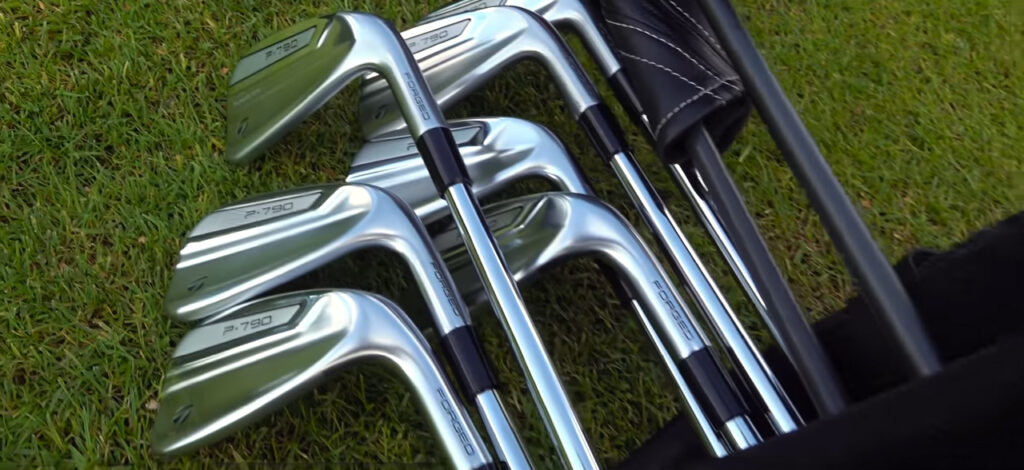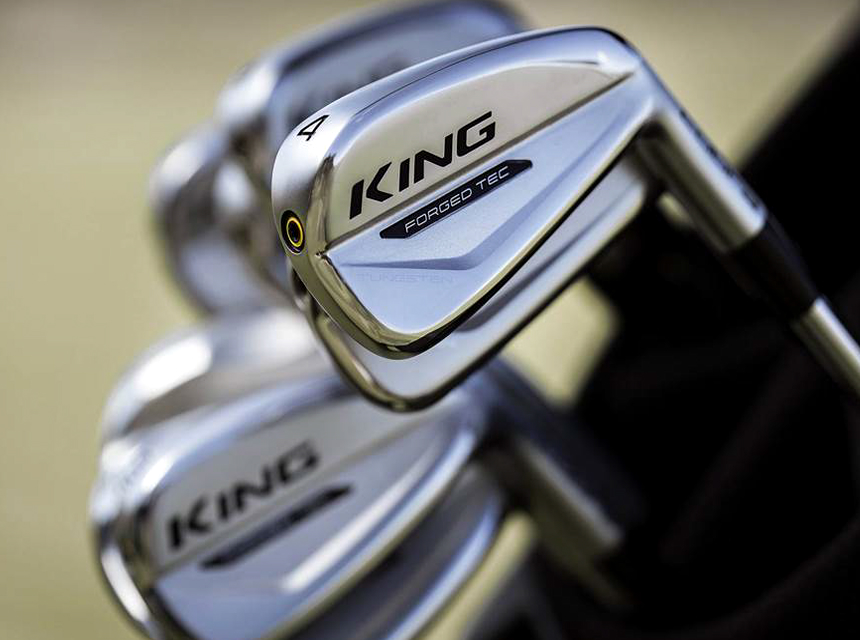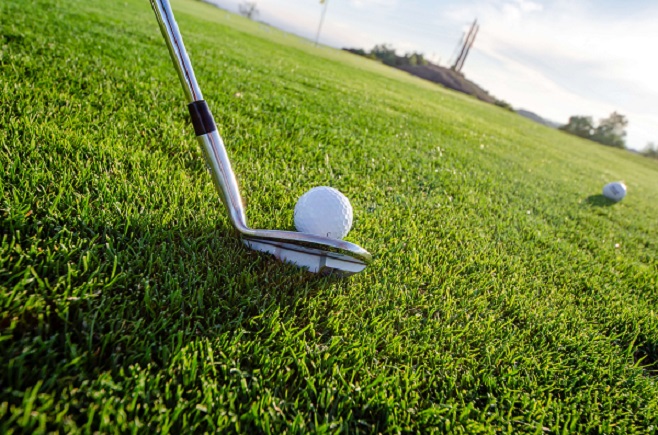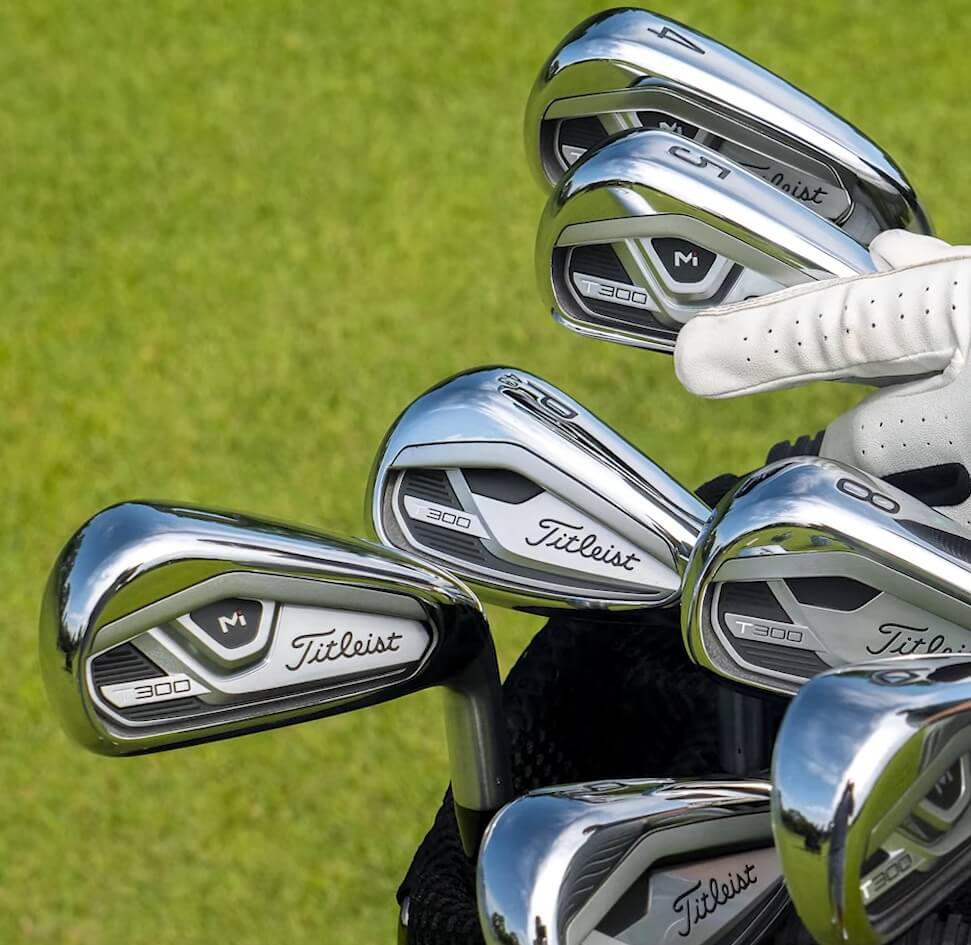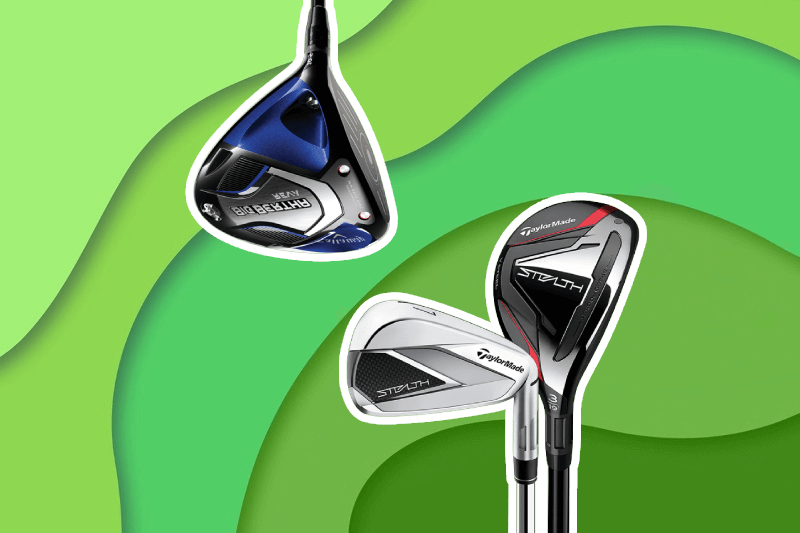
The 5 iron is a good club for putting your golfing prowess to the test. It’s often considered a long iron, although a lot shorter than a 2 iron for example. But a 5 iron is ideal for shooting the ball from a distance off the fairway and with precision. 5 irons are often for advanced golfers, but regardless of your skill level, in this article, we’ll see how to hit a 5 iron correctly.
You need a 5 iron for long-distance shooting, when you’re off the fairway, on the semi-rough, or sometimes from the rough. Long irons like a 5 are therefore suitable for golfers (mostly experienced golfers) who produce high clubhead speed and can also use ball spin skillfully to steer the ball optimally (e.g., to get the ball to lie directly after landing).
They’re so suitable for game situations in which the ball should fly rather flat (e.g. in strong winds or when playing out of a group of trees with low-hanging treetops).
Long iron vs short iron: what’s the difference? Do we need to do anything different in our setup and our swing to see that we’re getting the most out of both of those clubs?
Well, if we class a 2, 3, 4, and 5 iron as a long iron, then a 6, 7, 8, and 9 iron is short. Out of these, a 4 and/or 5 iron are the most used and you can find these irons in the range of the best irons under $500.
The difference here is all about the loft and length. Take a 4 iron and an 8 iron. When you put them down, you can see that a 4 iron is quite a few inches bigger than the 8 iron.
Also, on the difference in the loft on these golf clubs, 4 iron, as in our example, has significantly less loft. Generally, an 8 iron is around 36 degrees Trusted Source What Are The Degree Lofts Of Golf Clubs? Every golfer wants to launch the golf ball high and far, and so the question 'what are the degree lofts of golf clubs' is asked… www.golfspan.com in the loft and a 4 iron is going to be somewhere around about 25 degrees. They will get stronger as time goes on but those are the differences there.
With a hybrid golf club like the Cobra Golf 2021 Men’s T-Rail, optimally-hit golf balls fly significantly higher with a constant distance compared to long iron. Hybrid golf clubs are significantly more forgiving.
With a hybrid golf club, a noticeably slower clubhead speed is required to play a good ball. If you regularly hit your balls well and can generate a high clubhead speed at the same time, you have more opportunities to influence the ball flight with a long iron.
Hybrid golf clubs are therefore suitable for golfers with only a medium to low clubhead speed (which is often the case for beginners and casual golfers). They’re also suitable for game situations in which the ball should rather fly a little higher (e.g. to go over a tree).
The large volume of the hybrid clubhead ensures that the center of gravity of the club head is further back than with a long iron. At the same time, the volume ensures that more mass comes behind the golf ball.
Both ensure that the ball flies higher than with a long iron and at the same time a lower clubhead speed is required.
A hybrid club with 24 degrees of loft can be compared to a 4 iron. Note, however, that manufacturers do not consistently use the same loft specifications for their clubs. So it could be that a 4-iron from manufacturer A has a loft of 24 degrees, while a 4-iron from manufacturer B has a loft of 23 degrees.
Thankfully, you don’t have to choose between a hybrid golf club and a long iron as you’d find hybrid clubs and long clubs in the best golf club sets.
The short irons decide for more precision when we get further down the flag, and we get closer to the hole.
Here, you need precision. With the longer iron, on the other hand, it might be for a long par 3 Trusted Source The curse of the long par 3 | Golf Monthly Is the long par 3 a necessary evil? Or is it an avoidable evil? And are they, as Roderick Easdale contends, terribly dull holes to the average club golfer? www.golfmonthly.com . It might be for a second shot on a par 5 or teeing off with they’re designed for a little bit more distance.
If the emphasis isn’t so much on the accuracy, you can do something slightly different with a long iron.
You’ll get the distance with the long iron and accuracy and forgiveness with short irons like the Callaway X HOT Iron Set. However, because the Callaway includes one or two clubs that are sometimes also classed as long clubs, the set can be used for forgiveness and long-distance shots.
The setup is going to be different for both clubs. What we want to see from a longer iron because we’re trying to produce speed for a long distance is to build the platform to create the speed.
A long backswing can help create a big stretch up at the top. This is going to give you the backswing to transition into a downswing and make a big wide arc to create that speed.
Many players are nervous about pulling the long 5 irons out of their bag on the golf course. They wonder if the ball will rise well and if they will be able to contact it correctly.
Is that your case? Know that the operation of long irons and hybrids is however the same as with the other clubs in your series. In this session, we’ll see how to hit a 5 iron correctly, from the aspect of straightness and distance.
Some keys are essential to hit your 5 iron better. First, you have to control your bottom swing, the start line of the shots, the curve, and the speed to get a distance.
It’s always quite tricky hitting straight with a long iron especially when you have a blade iron – even when you have the best blade irons. This is because when you have a club that has a flatter face and not much loft, the ball starts much closer to where the face aims at contact.
When a golf ball gets hit as long as it’s a relatively centered strike, the ball is going to start aligned with the face regardless of what your path is.
The issue with longer clubs is identifying where your starting location is. So, we would highly recommend getting a friend of yours to stand directly behind you when you hit a shot.
Tell them where you’re aiming and help you see where your ball starts. Did it start straight or does it start left of target or right of the target? And when you have that information and that has been clarified two or three times then you can start working on it.
Get some sort of stick like an alignment stick which is found in golf places all the time. Or you could just use anything else and put that line directly in line with your target about three feet in front.
You’re not going to hit it with the ball or the club so it’s fired off in front but it’s giving you an idea of where you start and location.
If you know your starting location from your friend or evidence that it always starts to the left, your main mission is to get your ball to slide to the right of the stick.
If you know from your friend that your ball starts to the left to the right, try and get that club to start this ball starting left of that stick.
Then seek clarification again from your friend about where your ball is starting from.
Don’t just do this three or four times. Do this every time you go down to the driving range. You will get better at this and learn to control your face. You’ll adjust and get the ball starting straighter.
To hit a mid or long iron like a 5 a little bit higher, the first thing you have to do is have your clubs checked by a well-certified club fitter. This is because having a different kick point – a lower kick point – in your shaft and a different flex may make all the difference in the world for you.
But with that aside, you need to focus on three things, which are ball position, weight distribution, and swing planes.
The first thing is to check your ball position and make sure that you have the ball a little bit further forward in your stance. It should be at least left-of-center.
If you go too far forward, you can have the opposite effect where you’re coming up top much in the arc. Make sure it’s forward of center.
Your weight distribution is important too. If you’re in front of the golf ball or ahead of it, especially with your sternum, you’re going to smother the ball and knock it down.
So, if you want to hit the ball a little bit higher, make sure your body center and the head are slightly behind the ball.
Take your set up and then tilt a little bit back to the right and try to keep your head behind the ball a little bit more as you come through the shot.
If you’re too flat to rounded with the swing plane, you can hit the ball a little bit lower. So, you might just simply need a little bit more height.
What you can do is get your arms up a little bit higher in the backswing on your practice swings. Make sure you’re hitting down and taking great divots so that you know you’re descending into the ball and you’re not coming in too flat.
To hit your 5-iron 200 yards, first, you need to learn to hit it to a hundred yards. PGA Tour players practice this all the time. You have to learn the ability to hit with the same 5 iron clubs at different distances.
To start, make some shorter and slower swings back and through. When you finally master the 100-yard with a 5 iron, it will improve your contact and your rhythm.
We’ve got a few tips to help you improve your iron 5 hitting practices. These are going to help with accuracy, consistency but also ball striking.
That’s it! We’ve shown you how to hit a 5 iron. We’ve also provided you with tips, practices, and advice on the right gears.
Remember, with a 5-long iron, you’re aiming to get distance, precision, and straightness out of your shots.
A certified club fitter has to help you get the kick point right and your ball position, weight distribution, and swing planes must be appropriate if you want to hit the ball higher. Then, to get it straighter, you need a lot of practice at the driving range, probably with a friend and the use of an alignment stick.
Also, if you’re aiming for a longer distance of say 200 yards with your 5 iron, start with 100 yards and from there, you’d be able to perfect your shots. When you’re good with that, a 200 would be more feasible.
